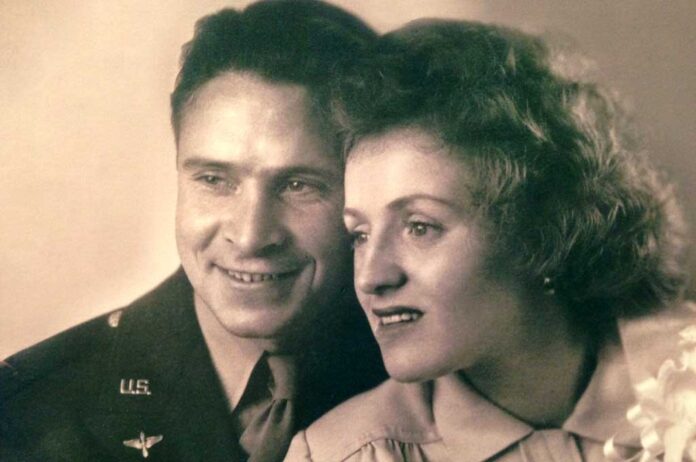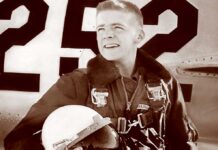Son, Jerad Summers, is Industrial Arts teacher at Hazelbrook Middle School – Bradley was liberated on April 29, 1945 by US Army 14th Armored Division
Bradley Summer’s knew he was in trouble when the B-17 he was co-piloting fell behind the squadron formation on the return trip to England after participating in a WWII bombing raid on Hamburg as part of Operation Gomorrah, targeting strategic shipyards, U-boat pens and oil refineries. German fighter planes, Messerschmidts and Fokwolves, were blowing his plane apart. Forced to bail out, he was momentarily dazed when hit the ground, then found himself staring up at a double barrel shotgun held by a farmer. He said he “decided best not to test if shotgun was loaded.”
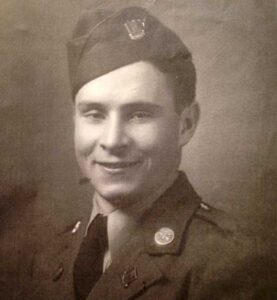
Bradley was sent to an interrogation center called Dulag Luft in Frankfurt. He was surprised to find that the ever efficient German military already a folder with his name on it and notes including his home address and military training. He limited his answers to Geneva Convention requirements. Because not cooperative, he was ordered to solitary confinement. But after that was not interrogated again. He was given script which enabled him to buy toothpaste and personal care items at the Camp PX. He got a pair of black GI shoes, two sizes too big which he wore throughout his entire prison stay. From Dulag Luft he was sent to Stalag 3, a Luftwaffe-run prisoner-of-war Camp 100 miles Southeast of Berlin that housed captured air force officers. He was incarcerated there for two years.
Bradley wrote “although Stalag 3 was considered the country club of German prison camps, it lacked a lot of being a country club”. Initially he was put into a compound occupied by both U.S. and British officers. Several months later, Bradley and other Americans were moved to an American compound. Eventually the camp grew to 60 acres in size, housing 2,500 Royal Air Force officers, 7,500 U.S. Army Air Force and 900 officers from other nationalities. He quickly learned the daily routine of life. Twice a day, a nose count was conducted, called “appell”. The prisoners would line up in a formation. Two guards would count, one in front and one in back. They wanted to make sure that the number of prisoners in each barracks matched the number assigned. Each prisoner received an 11-pound Red Cross food package weekly to supplement German rations, which were usually potatoes and when in season, cabbage and other vegetables. Cooking was done in each barracks, with prisoners taking turns. The Red Cross package included cigarettes, coffee, tea and chocolate bars. Those items were the medium of exchange for the prisoners. Mail call was slow. Prisoners were allowed to send several letters or postcards a week but it took several months to get an answer. The War Department provided special parcel labels that allowed families to send four care packages a year, each weighing up to 11 pounds. Additionally tobacco companies sent packages “in bond” at the request of families. Bradley said one of his care packages included “Seaforth aftershave lotion”. Word got out and guys traded a candy bar or a cigar to get a splash.
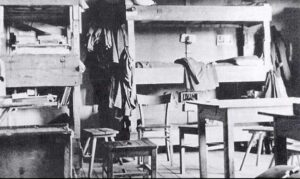
Stalag 3 was the camp where the tunneling for “The Great Escape” was done. Bradley was aware of the preparation activity underway but was in a different compound when the prison break occurred. Some 76 prisoners escaped. Three made it out of Germany, 50 were shot and the remaining returned to the camp.Even though under stressful conditions, Bradley said the POWs managed to have fun, with good natured pranks on each other, sports and even prisoner performed theater and music. His notes give validity to some of the zany activities depicted in the TV series Hogan’s Heros which ran from 1966 through 1971.
When Russian troops were near, the POWs were marched 34 miles in below-freezing temperatures. After a 30 hour rest, they marched another 16 miles to a railway stop where they sent by train to Mooseberg. After freed by US 14th Armored Division on April 29, 1945, Bradley wrote “we saw the old American flag rise up on the flagpole on top of the city hall over in Mooseberg and man, don’t you think that is a beautiful sight. Boy, we were really proud of that moment. We knew we were liberated then.”
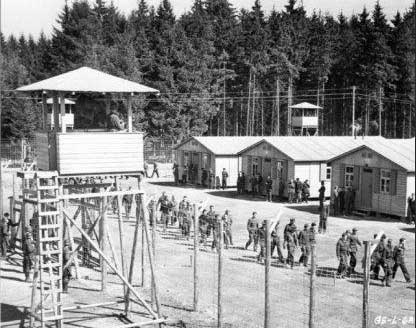
Machine gun watchtower at Stalag 3 POW camp. 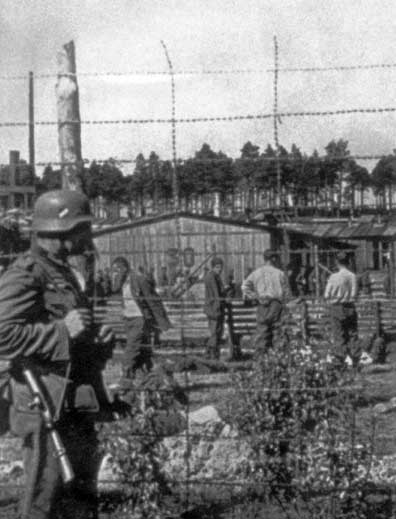
German soldier guarding POWs (in Stalag 3). 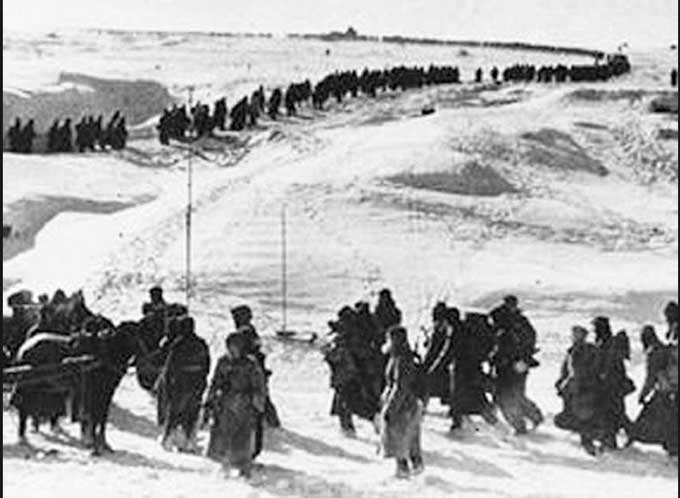
POWs in Stalag 3 moved Northward as Russian troops close in. 
An Allied tank that liberated POWs. 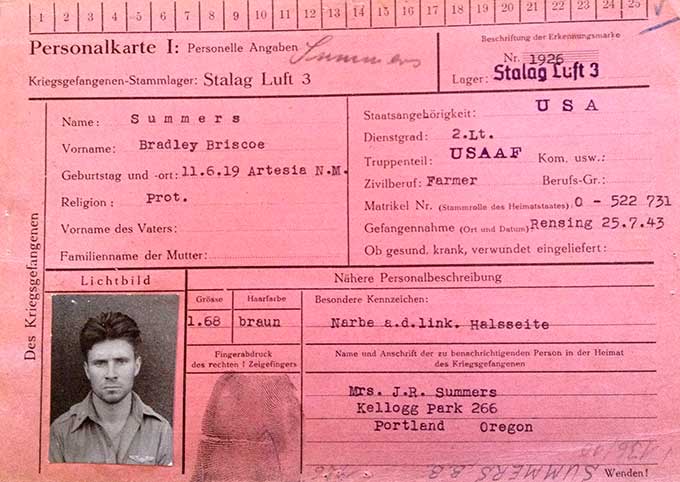
Brad Summers POW ID card. 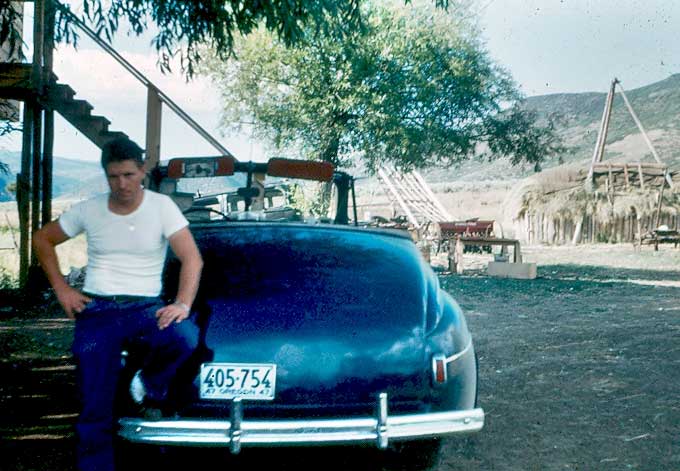
1940 Ford convertible that Bradley bought with two years back pay for time as POW. 
Bradley and Rachel’s children.

